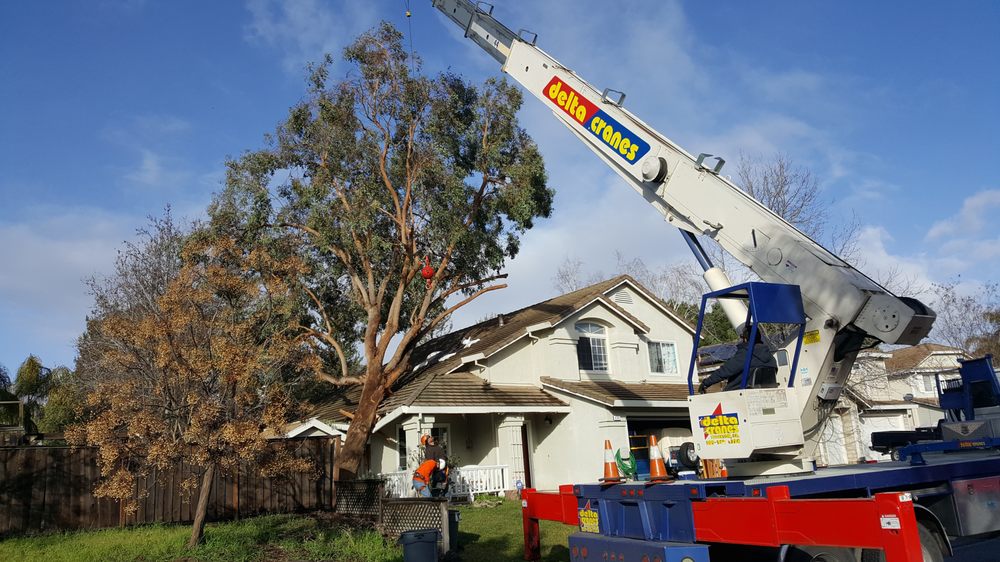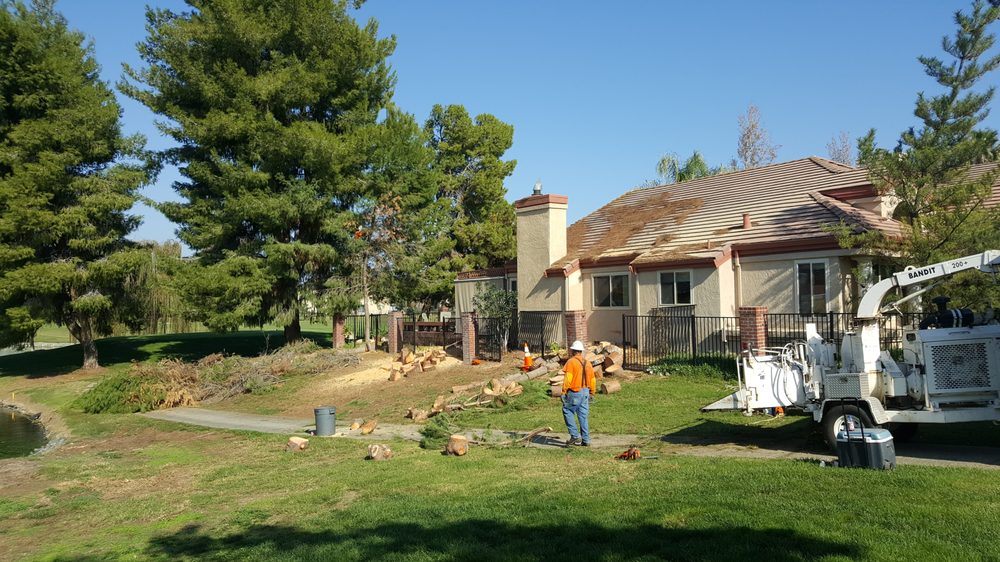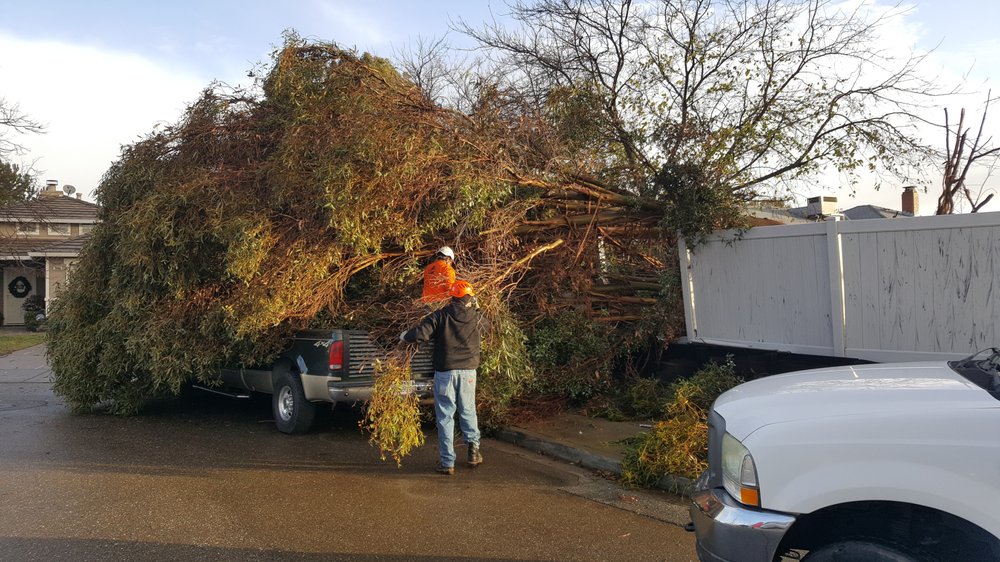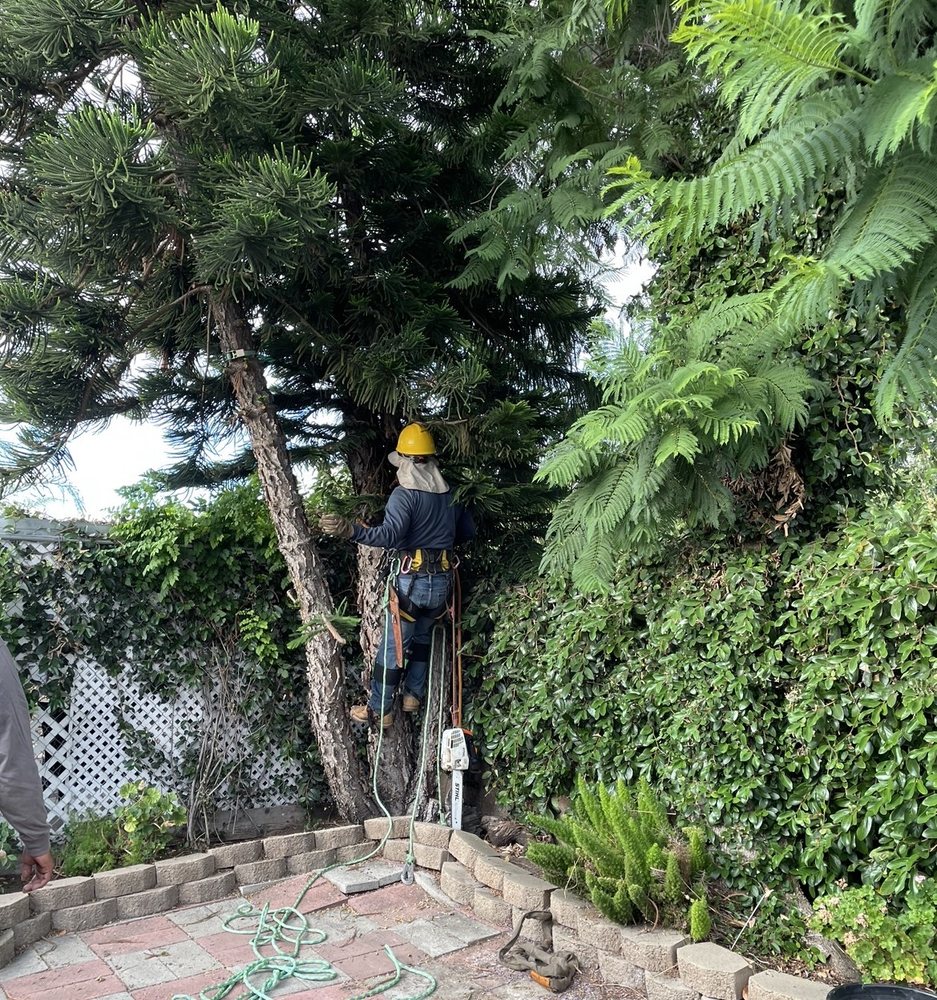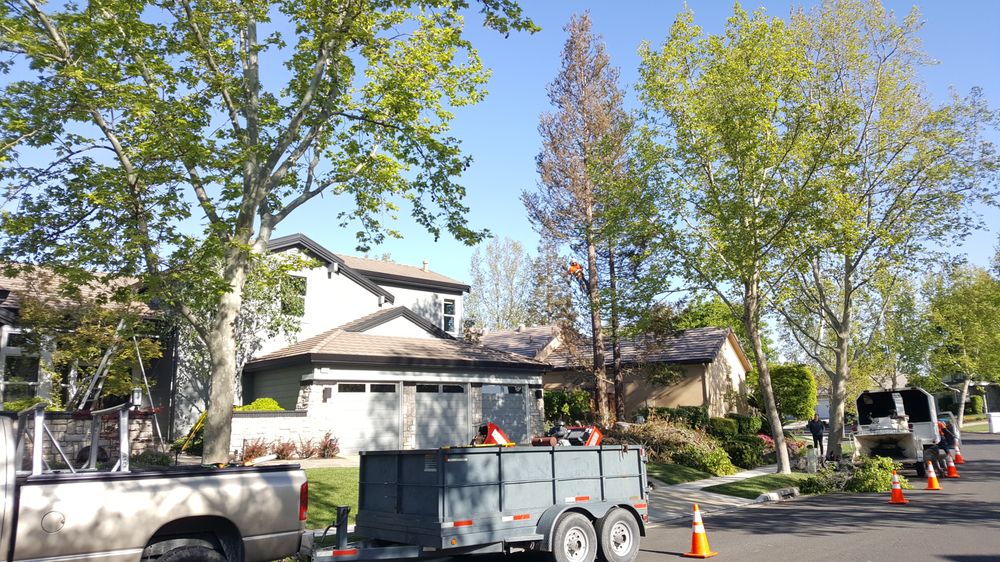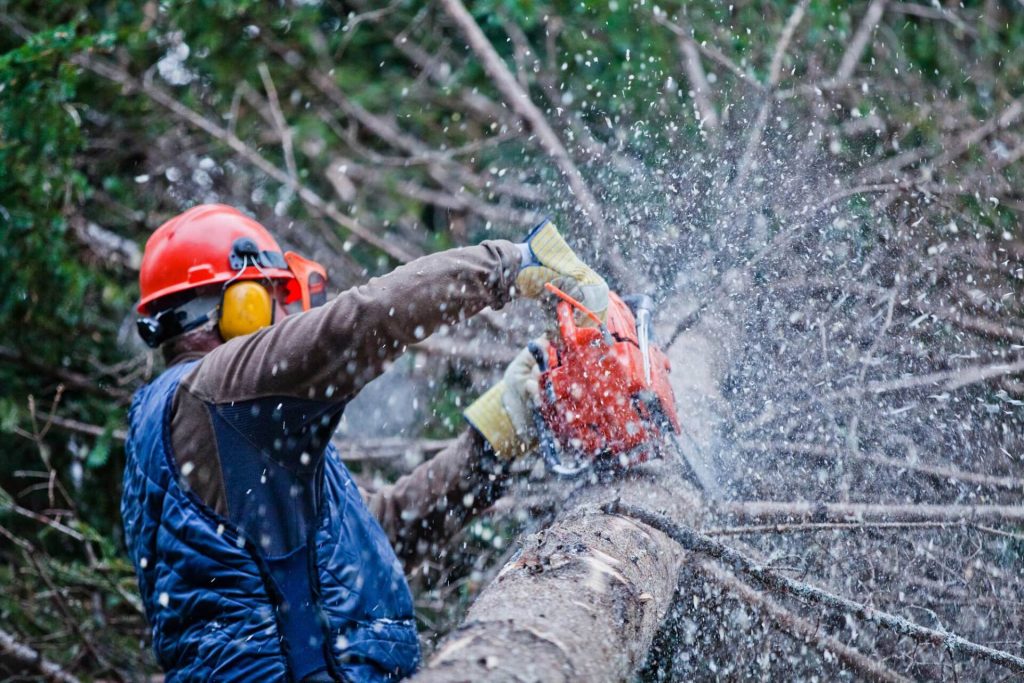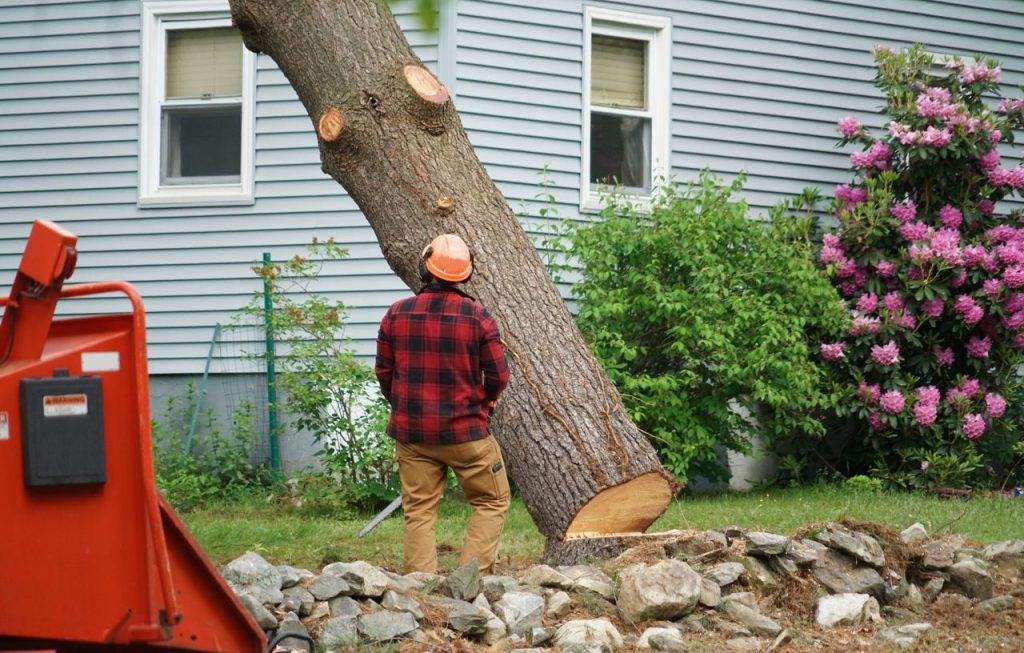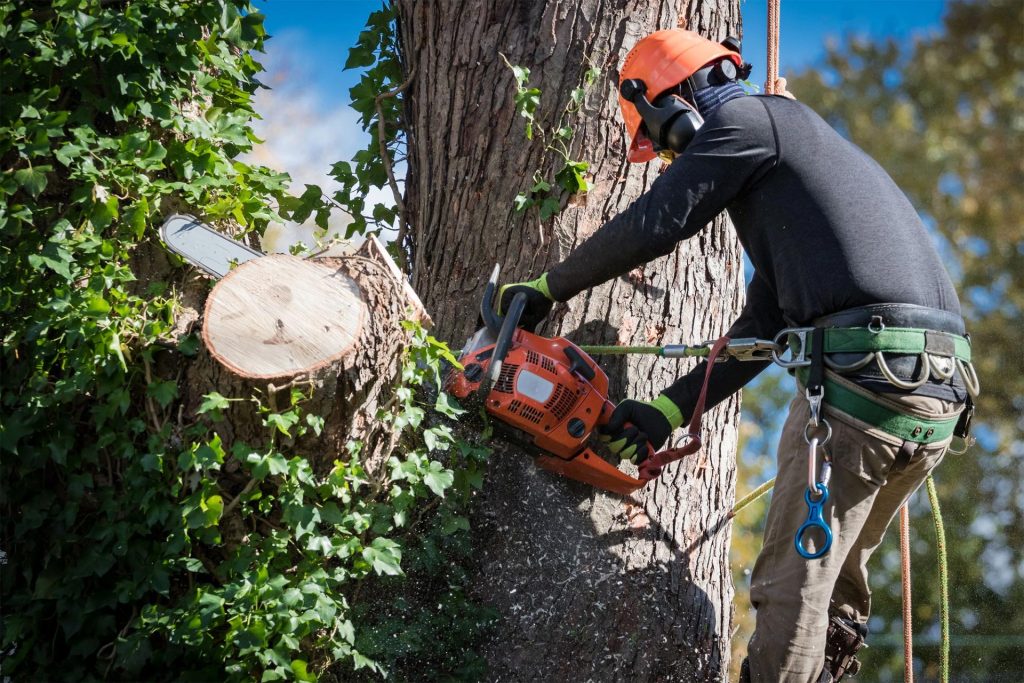About Brentwood, California, And The Role Of Licensed Tree Services In Urban Landscaping In Brentwood
Brentwood, California, is a vibrant Contra Costa County city known for its warm climate, suburban charm, and agricultural roots. Over the past few decades, Brentwood has transformed from a small farming community into a bustling suburban hub, attracting families and businesses alike. With this growth, urban landscaping has become crucial to maintaining the city’s aesthetic appeal and environmental health.
Licensed tree services play a vital role in Brentwood’s urban landscaping. These professionals are responsible for various tasks that contribute to the city’s green spaces. They manage tree planting, ensuring that the right species are selected for the local climate and soil conditions, which promotes biodiversity and ecological balance. Tree services also handle pruning and trimming, which are essential for maintaining tree health, safety, and aesthetics. Properly pruned trees are less likely to suffer from disease, storm damage, or overgrowth that can interfere with power lines and property.
Additionally, licensed tree services are crucial for tree removal and stump grinding. When trees become hazardous due to age, disease, or storm damage, these experts safely remove them, preventing potential property damage or injury. They also offer emergency services, providing rapid response to storm-related tree damage, which is especially important in maintaining public safety and infrastructure.
By employing licensed tree services, Brentwood ensures that its urban landscape remains beautiful, safe, and sustainable. These professionals bring expertise and knowledge, helping to create a harmonious balance between urban development and the natural environment. As Brentwood continues to grow, the role of licensed tree services in urban landscaping will remain integral to the city’s charm and livability.
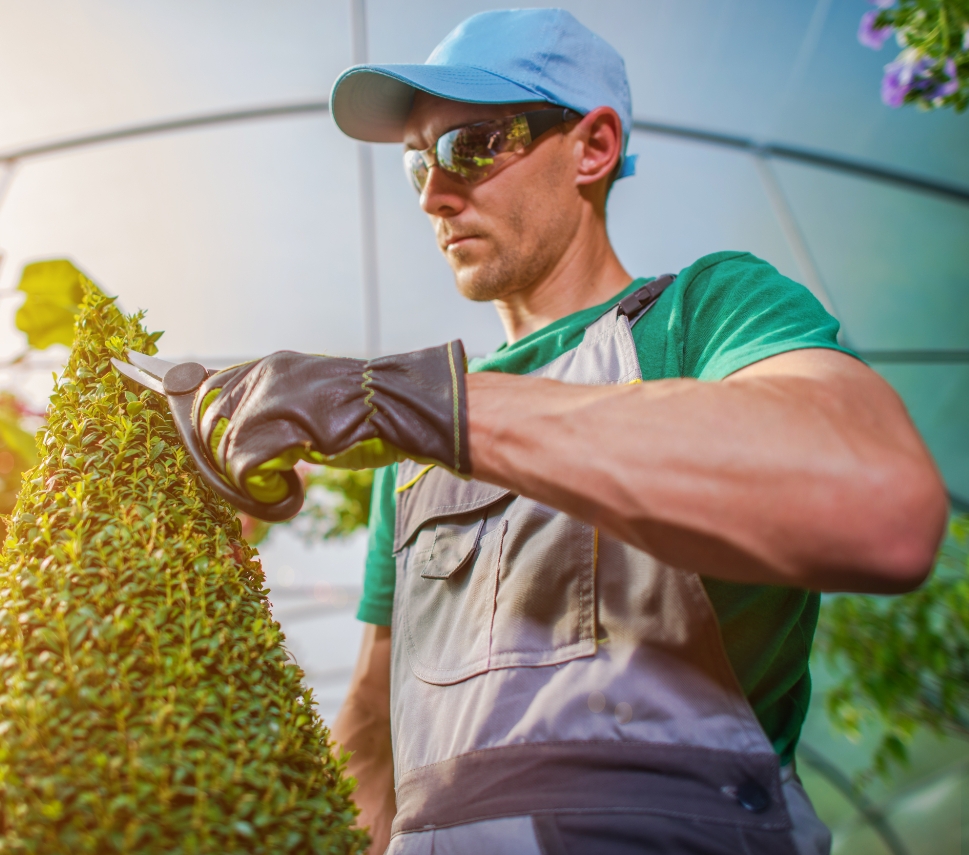
Why Visit Brentwood? Top 3 Public Gardens In Brentwood, California
Brentwood, California, is a delightful destination for those who appreciate the beauty of nature and the charm of suburban living. Known for its agricultural heritage and warm climate, Brentwood offers a variety of public gardens that showcase the region’s natural splendor. Here are the top three public gardens in Brentwood that are worth a visit:
1. Orchard Park
Orchard Park, nestled in the vibrant community of Brentwood, California, is a popular destination for residents and visitors seeking a blend of recreation and natural beauty. This well-maintained park is designed to cater to a wide range of outdoor activities, making it a favorite spot for families, fitness enthusiasts, and nature lovers.
The park features expansive green spaces perfect for picnicking, playing catch, or simply lounging under the sun. Numerous shaded areas and picnic tables provide comfortable spots for gatherings, while the children’s playground, equipped with modern play structures, ensures that kids have a safe and fun environment to explore and enjoy.
One of the standout features of Orchard Park is its scenic walking and jogging paths. These paved trails wind through the park, offering a serene setting for a stroll or an invigorating run. Along the way, visitors can enjoy views of beautifully landscaped gardens filled with a variety of trees, shrubs, and flowers that bloom throughout the year, adding bursts of color and fragrance to the environment.
For sports enthusiasts, Orchard Park boasts several amenities, including basketball courts, tennis courts, and open fields suitable for soccer or other recreational activities. These facilities are well-maintained and provide ample space for both casual and competitive play.
Community events and seasonal activities frequently take place at Orchard Park, fostering a sense of community and providing entertainment for all ages. From outdoor movie nights to fitness classes and local festivals, there is always something happening to engage and delight park-goers.
Overall, Orchard Park is a gem in Brentwood, offering a harmonious blend of recreational facilities, natural beauty, and community spirit. It’s an ideal place to spend a day outdoors, whether you’re looking to exercise, socialize, or simply relax in a beautiful setting.
2. Hannah Nicole Vineyards & Winery Gardens
Hannah Nicole Vineyards & Winery, located in the picturesque Brentwood, California, offers more than just exceptional wines. Nestled amidst the scenic Contra Costa County landscape, this vineyard is renowned for its stunning gardens that provide a tranquil escape from the hustle and bustle of everyday life.
The gardens at Hannah Nicole Vineyards & Winery are a testament to the beauty of blending nature with viticulture. As visitors approach the vineyard, they are greeted by expansive rows of grapevines that stretch out over the rolling hills, their lush green leaves creating a patchwork of colors against the backdrop of the blue sky. The well-maintained grounds around the winery are meticulously landscaped, showcasing a variety of plants that add to the venue’s charm.
One of the most striking features of the gardens is the array of colorful flower beds that line the pathways. These beds are carefully curated to include a mix of seasonal blooms, providing a vibrant display of colors throughout the year. From the bright yellows of marigolds in the summer to the rich purples of lavender in the spring, the flowers offer a visual feast that complements the vineyard’s picturesque setting.
The gardens also include several shaded areas with comfortable seating, allowing visitors to relax and take in the natural beauty around them. These spots are ideal for enjoying a glass of Hannah Nicole’s renowned wine, as guests can unwind while surrounded by lush greenery and tranquil views. The gentle rustling of leaves and the occasional chirping of birds create a serene atmosphere that enhances the overall experience.
In addition to its aesthetic appeal, the gardens serve a practical purpose. They contribute to the vineyard’s sustainable practices by incorporating drought-resistant plants and efficient irrigation systems. This approach not only conserves water but also ensures that the gardens remain vibrant and healthy throughout the year.
Hannah Nicole Vineyards & Winery also hosts various events in its gardens, including wine tastings, private parties, and community gatherings. These events often take advantage of the beautiful outdoor setting, providing a memorable experience for guests against the backdrop of the vineyard’s lush landscape.
Overall, the gardens at Hannah Nicole Vineyards & Winery are a perfect example of how thoughtful landscaping can enhance a winery’s appeal. They offer visitors a chance to enjoy both the natural beauty of Brentwood and the exceptional wines produced on-site, making it a must-visit destination for anyone seeking a peaceful and picturesque retreat.
3. Veterans Park
Veterans Park in Brentwood, California, is a cherished community space that combines natural beauty with a profound sense of reverence. Dedicated to honoring the service and sacrifices of military veterans, the park serves as a vibrant testament to the values of patriotism and community spirit. Beyond its role as a memorial, Veterans Park is also a beloved recreational spot that offers residents and visitors alike a serene retreat.
Upon entering Veterans Park, visitors are immediately struck by the well-maintained, expansive lawns that form the heart of the park. These open spaces are perfect for a variety of activities, from picnicking with family to playing sports. The park’s design incorporates a blend of well-manicured grass areas and gently winding paths that invite leisurely strolls and provide ample room for relaxation.
One of the park’s most notable features is the beautifully crafted Veterans Memorial. This central monument pays tribute to the brave men and women who have served in the armed forces. The memorial is adorned with plaques and inscriptions that commemorate the dedication and courage of veterans, creating a space for reflection and gratitude. Surrounding the monument, you’ll find a series of landscaped gardens with carefully chosen plants that enhance the area’s tranquility and add to its aesthetic appeal.
Veterans Park is also equipped with various amenities that cater to the needs of visitors. A well-equipped playground provides a safe and enjoyable space for children, making it a popular spot for families. Additionally, there are numerous shaded benches and picnic tables strategically placed throughout the park, offering comfortable spots to rest and take in the natural surroundings.
For those interested in fitness, the park features walking and jogging paths that meander through its scenic areas. These paths offer a peaceful environment for exercise while allowing users to enjoy the beauty of the park’s greenery and mature trees. The park’s design encourages an active lifestyle while promoting a sense of well-being and connection with nature.
Throughout the year, Veterans Park hosts a variety of community events, including patriotic celebrations, local festivals, and educational programs. These events foster a sense of community and provide opportunities for residents to engage with one another in a meaningful way. The park’s versatile spaces are ideal for hosting such gatherings, making it a hub of community life in Brentwood.
In summary, Veterans Park stands out as a cherished gem in Brentwood. Its combination of beautiful landscaping, thoughtful memorials, and diverse amenities makes it a valuable space for both remembrance and recreation. The park not only honors the legacy of veterans but also serves as a vibrant and welcoming environment for all who visit.
The Best Licensed Tree Services In Brentwood, California – JC Tree Service
Transform Your Landscape With Top-Quality Licensed Tree Services From JC Tree Service – Your Trusted Tree Care Professionals!
Are unhealthy or unmanaged trees compromising the beauty and safety of your property? Look no further than JC Tree Service, your premier destination for exceptional licensed tree services. With our team of skilled arborists, we specialize in providing comprehensive tree care solutions to enhance the health, aesthetics, and safety of your landscape. Whether it’s tree removal, stump grinding, or disease management, we meticulously evaluate each tree’s condition to deliver superior results. Say goodbye to the risks and challenges of DIY tree care and trust your trees with the experts at JC Tree Service.
Don’t let neglected trees detract from your landscape’s appeal any longer. Take the proactive step towards maintaining a healthy and stunning property by scheduling a consultation with JC Tree Service today. Our dedicated professionals will work closely with you to understand your preferences and create a tailored tree care plan that fits your needs and budget. Experience the excellence of professional tree care with JC Tree Service – where quality, precision, and customer satisfaction are always our top priorities!
Top 3 Questions People In Brentwood, California Have About Licensed Tree Services
When it comes to maintaining the lush greenery and ensuring the safety of their properties, residents of Brentwood, California often seek the expertise of licensed tree services. Understanding the key concerns of the community can help in providing tailored solutions and enhancing service satisfaction. Here are the top three questions that people in Brentwood commonly have about licensed tree services.
1. Why Should I Hire A Licensed Tree Service In Brentwood, California?
Hiring a licensed tree service is crucial for several reasons. Firstly, licensed professionals possess the necessary training and expertise to handle a variety of tree care tasks, from pruning and trimming to removal and disease management. This ensures that the work is done safely and correctly, minimizing the risk of damage to your property or injury to individuals.
Secondly, licensed tree services are required to carry liability insurance and workers’ compensation. This protects you from potential financial and legal liabilities in case of accidents or property damage during the tree care process. Unlicensed providers often lack this coverage, leaving you vulnerable to unexpected costs.
Additionally, licensed tree services adhere to local regulations and industry standards. They are knowledgeable about the specific needs of different tree species and the best practices for maintaining their health and safety. This expertise helps in making informed decisions about tree care, ensuring the longevity and vitality of your trees.
Lastly, hiring a licensed service provides peace of mind. You can trust that the company has been vetted by regulatory bodies and meets the required professional standards. This reliability is crucial for maintaining the aesthetics and safety of your landscape, making the investment in a licensed tree service a wise choice.
2. How Can I Verify If A Tree Service Is Licensed In Brentwood, California?
Verifying if a tree service is licensed involves a few straightforward steps:
A. Request The License Number: Ask the tree service provider for their license number. A reputable company will be happy to provide this information.
B. Check With Local Authorities: Use the license number to check with local or state licensing boards or agencies. They can confirm whether the license is valid and if the company is in good standing.
C. Review Online Resources: Many states and municipalities have online databases where you can search for licensed professionals. Check these resources to verify the company’s credentials.
D. Ask For Proof Of Insurance: In addition to a license, a legitimate tree service should have liability insurance and workers’ compensation. Ask to see proof of these documents to ensure you’re covered in case of accidents or damage.
E. Read Reviews And Get References: Look for customer reviews online and ask the company for references from previous clients. Positive feedback and recommendations can provide additional assurance of the company’s legitimacy and professionalism.
Taking these steps helps ensure you hire a qualified and trustworthy tree service, protecting both your property and your investment.
3. What Services Do Licensed Tree Companies Offer In Brentwood, California?
Licensed tree companies offer a wide range of services to ensure the health, safety, and aesthetics of trees and landscapes. Here’s a concise overview of their key offerings:
A. Tree Trimming And Pruning: Regular maintenance to remove dead or overgrown branches, enhancing tree health and appearance while preventing potential hazards.
B. Tree Removal: Safe and efficient removal of dead, diseased, or dangerous trees, often involving complex equipment and techniques.
C. Stump Grinding And Removal: Complete elimination of tree stumps to improve yard aesthetics and prevent pest infestations or regrowth.
D. Tree Planting: Expert advice and planting services to ensure the right tree species are selected and properly planted for optimal growth.
E. Emergency Services: Rapid response to storm damage or fallen trees to clear debris and mitigate further risk to property and people.
F. Pest And Disease Management: Identification and treatment of tree diseases and pest infestations to protect and maintain tree health.
G. Cabling And Bracing: Structural support for weak or unstable trees, helping to prevent limb breakage and improve safety.
H. Consultation And Risk Assessment: Professional evaluation of tree health, safety risks, and landscape impact, providing valuable insights for property management.
These services, provided by certified arborists and skilled professionals, ensure trees are properly cared for, contributing to the safety, beauty, and environmental value of urban and residential landscapes.
Map To Our Location From Brentwood, California
Transform Your Property With JC Tree Service’s Licensed Tree Services
Is your home or business suffering from overgrown or damaged trees? JC Tree Service is here to transform your outdoor spaces with our expert solutions. Imagine a landscape free from unsightly branches and potential hazards. Our specialized team handles everything with precision, offering licensed tree services, including comprehensive pruning and landscaping solutions, throughout Brentwood, Antioch, and the surrounding areas.
We know that aesthetics and safety are paramount in tree care. That’s why we are committed to delivering top-tier services tailored to your needs. Licensed tree services are essential not only for boosting your property’s curb appeal but also for ensuring the safety of your environment. Our effective tree care prevents pest infestations, reduces the risk of falling branches, and fosters a healthy, thriving landscape. With JC Tree Service, you can trust that your property is in the hands of professionals dedicated to maintaining its beauty and safety.
Don’t let overgrown trees mar the beauty and security of your surroundings. Reach out to JC Tree Service today and discover how our licensed tree services can transform your property. We provide a free, no-obligation quote to get you started. Experience the difference that professional tree care can make!
Disclaimer
The materials available on this website are for informational and entertainment purposes only and not to provide legal or professional advice. You should contact your attorney or home improvement specialist to obtain advice concerning any particular issue or problem. You should not act or refrain from acting based on any content included in this site without seeking legal or other professional advice. The information presented on this website may not reflect the most current home improvement developments. No action should be taken in reliance on the information on this website. We disclaim all liability concerning actions taken or not taken based on any or all of the contents of this site to the fullest extent permitted by law

